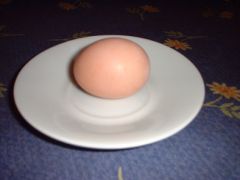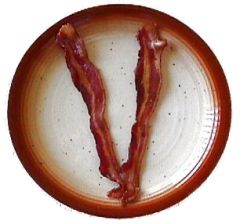![]()
![]()
![]()
Use LEFT and RIGHT arrow keys to navigate between flashcards;
Use UP and DOWN arrow keys to flip the card;
H to show hint;
A reads text to speech;
16 Cards in this Set
- Front
- Back
|
Polish scholar who proposed heliocentric (sun-centered) theory of the universe
|

Nicolaus Copernicus
Sun-centered universe |
|
|
German astronomer who calculated that the shape of planetary orbits around the sun is an ellipse (oval or egg shape)
|

Johannes Kepler
Planets orbit in egg-shaped ellipses |
|
|
Italian astronomer who invented the telescope; recorded the orbits of the four moons of Jupiter to support heliocentric (sun-centered) theory of universe; tried before the Inquisition
|

Galileo Galilei
"Ground" a "Round" lens to view Jupiter |
|
|
Englishman who helped develop scientific method; stressed practical technology in science
|

Francis Bacon
Practical Francis = Makin' Bacon |
|
|
French philosopher who helped develop scientific method; stressed the importance of human reasoning
|

Rene Descartes
Des-"cart" pushed the scientific method along by reason |
|
|
English mathematician who formulated the law of gravity; his work linked physics and astronomy; helped develop calculus
|

Newton
Law of gravity was a "fig" breakthrough for science |
|
|
Chemist who distinguished between elements and compounds; explained the effects of temperature and pressure on gases
|

Robert Boyle
"Boil" "cooked" up a theory for gas temperature and pressure |
|
|
Heliocentric
|
Sun-centered
|
|
|
Hypothesis
|
A possible explanation tested by experimentation; a beginning step in the scientific method
|
|
|
Scientific Method
|
A step-by-step process based upon observation and experimentation
|
|
|
Gravity
|
A single attractive force that keeps planets in their orbit around the sun
|
|
|
It contradicted ancient views of astronomy and challenged Christian teachings that the heavens were fixed
|
Why did some people oppose the heliocentric theory of the universe?
|
|
|
It did not rely on earlier authorities like ancient teachers or the Bible. Instead, it relied on observation and experimentation.
|
How did the scientific method differ from earlier approaches?
|
|
|
Newton used mathematics to explain the workings of the universe. He theorized that Nature follows uniform laws, and that a single force could control the motions of the planets.
|
How did Newton try to explain the workings of the universe?
|
|
|
He was referring to the fact that without the work of previous thinkers, science would not have arrived at the point where he began his work. "Giants" that preceded Newton included Copernicus, Brahe, Kepler and Galileo.
|
What did Newton mean when he wrote, "If I have seen further it is by standing on the shoulders of giants"? Who might be some of the "giants" he was referring to?
|
|
|
No heliocentric theory = no understanding of Earth's seasons, weather systems. No Newtonian physics = no space missions or huamns landing on the moon. No scientific method = no advancement in medicine or technology.
(Many others!) |
Identify three ways in which your life might have been different if the Scientific Revolution had never occurred.
|

